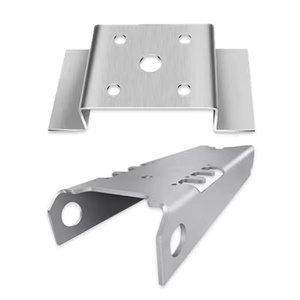Custom metal parts processing a process that involves multiple steps and professional skills. Here are some key steps and precautions:
Clarify requirements and communicate:
Firstly, the customer needs to specify the specifications, dimensions, material types, quantities, and accuracy levels of the required custom metal parts.
Communicate in detail with suppliers or manufacturers to ensure that both parties have a clear understanding of the requirements.
Design and Drawing:
According to customer needs, designers carry out product drawing work, drawing the shape, size, etc. of the custom metal parts, and determining the selection of materials.
This step is crucial as it transforms customer needs into actual product design drawings, providing a foundation for subsequent processing and manufacturing.
Material preparation:
Prepare the required metal materials according to custom metal parts design and customer requirements. Different metal materials have different characteristics and properties, so it is necessary to choose according to the actual needs of the product.
Processing and Manufacturing:
Once the materials are ready, actual processing and manufacturing work can begin. This includes machining processes such as cutting, bending, stamping, welding, etc., to make the metal material a compliant part.
In this process, it is necessary to strictly follow the process flow to ensure processing quality and accuracy.
Surface treatment:
After completing metal processing of custom metal parts, it is usually necessary to perform surface treatment on the product to improve its corrosion resistance, wear resistance, and aesthetics. Common surface treatment methods include coating, electroplating, etc.
Customized metal brackets have a wide range of applications in many industries.
In the mechanical manufacturing industry, customized metal brackets are commonly used to support and fix various components of mechanical equipment. For example, customized metal brackets inside machine tools can ensure precise positioning and stable operation of key components.
In the field of electronic communication, they provide stable structural support for electronic devices. Like customized metal brackets in communication base stations, they can carry and protect important communication equipment.
In the automotive industry, customized metal brackets are used for the chassis, engine compartment, and interior of vehicles. For example, brackets on the chassis help enhance the structural strength and stability of the vehicle.
In the construction industry, customized metal brackets can be used to support various structural components of buildings, or as decorative elements to enhance the aesthetics of buildings.
In the energy industry, such as wind and solar power equipment, customized metal brackets can ensure the correct installation and stable operation of power generation components.
Customized metal brackets meet various special needs in different industries due to their flexibility and adaptability. For example, in the medical device industry, customized metal brackets can accurately adapt to specific medical devices; In the field of rail transit, customized metal brackets provide reliable installation support for the electrical equipment of rail vehicles
